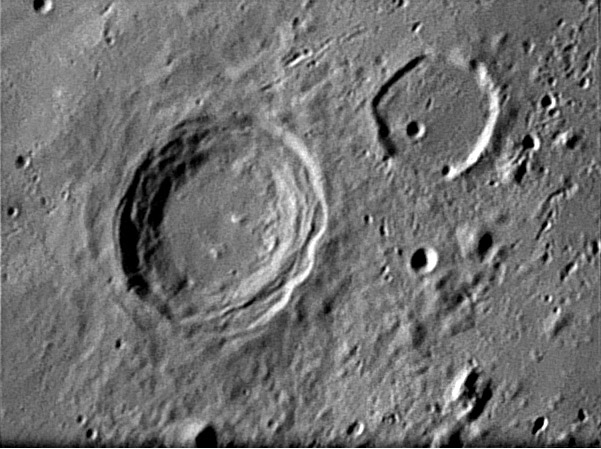|
|
| (4 intermediate revisions by the same user not shown) |
| Line 7: |
Line 7: |
| | <p>[[File:Reinhold-emond.jpg|Reinhold-emond.jpg]]<br /> | | <p>[[File:Reinhold-emond.jpg|Reinhold-emond.jpg]]<br /> |
| | <em>image by [mailto:francois.emond@free.fr François Emond], Hautes-Alpes, FRANCE.</em></p> | | <em>image by [mailto:francois.emond@free.fr François Emond], Hautes-Alpes, FRANCE.</em></p> |
| − | <p>Although there have been about 1,200 LPODs, not every one of the [http://the-moon.wikispaces.com/Nomenclature+Zoo 1,229] nearside named features has had its own page. The problem is that a handful of craters grab attention, so that every imager has their personal best Plato, Clavius, Copernicus, Gassendi, Tycho and Theophilus, all of which are submitted to LPOD. And I publish them when I can find something new to say - or am too awestruck to say much of anything. As a strike for fairness, today LPOD shows the interior of an often overlooked crater that has previously been depicted only under very [http://www.lpod.org/?m=20070320 low] illumination. [http://the-moon.wikispaces.com/Reinhold Reinhold] lives in the shadow of Copernicus (not the real shadow, but a shadow of neglect due to being too near a superstar to be noticed), and has even been pelted by its secondaries and swathed by its rays. Reinhold (diameter 42 km) is an atypical complex crater because it has just two small off-center hills rather than a massive central peak like its more normal neighbor 38 km wide [http://the-moon.wikispaces.com/Lansberg Lansberg]. I don’t know why some complex craters lack substantial central peaks, but many in this category formed on basin ejecta, which may have been too incoherent to form massive peaks. François’ image hints at a central dip between the two hills. Craters formed on Mars and Jupiter’s icy satellites often have central pits instead of peaks because a subsurface ice layer evaporates rather than rebounding. A pit on the Moon would not have the same origin, but perhaps settling of highly fractured rocks in the center could cause the dip. In fact, another of François’ images, of ["'http://lpod.org/coppermine/displayimage.php?pos=-2853" Aristoteles], another crater lacking a significant peak, hints at a dip between its small peaks. Is this true for other complex craters with small, off-center peaks?</p> | + | <p>Although there have been about 1,200 LPODs, not every one of the [https://the-moon.us/wiki/Nomenclature_Zoo 1,229] nearside named features has had its own page. The problem is that a handful of craters grab attention, so that every imager has their personal best Plato, Clavius, Copernicus, Gassendi, Tycho and Theophilus, all of which are submitted to LPOD. And I publish them when I can find something new to say - or am too awestruck to say much of anything. As a strike for fairness, today LPOD shows the interior of an often overlooked crater that has previously been depicted only under very [[March_20,_2007|Aristoteles]], another crater lacking a significant peak, hints at a dip between its small peaks. Is this true for other complex craters with small, off-center peaks?</p> |
| | <p>[mailto:tychocrater@yahoo.com Chuck Wood]</p> | | <p>[mailto:tychocrater@yahoo.com Chuck Wood]</p> |
| | <p><strong>Technical Details:</strong><br /> | | <p><strong>Technical Details:</strong><br /> |
| Line 16: |
Line 16: |
| | <p><b>Yesterday's LPOD:</b> [[November 18, 2007|Re-Map-Ing the Moon]] </p> | | <p><b>Yesterday's LPOD:</b> [[November 18, 2007|Re-Map-Ing the Moon]] </p> |
| | <p><b>Tomorrow's LPOD:</b> [[November 20, 2007|Limb Gift]] </p> | | <p><b>Tomorrow's LPOD:</b> [[November 20, 2007|Limb Gift]] </p> |
| − | <!-- Removed reference to store page --> | + | <!-- Removed reference to store page 2 --> |
| | </div> | | </div> |
| | <!-- End of content --> | | <!-- End of content --> |
| | {{wiki/ArticleFooter}} | | {{wiki/ArticleFooter}} |




